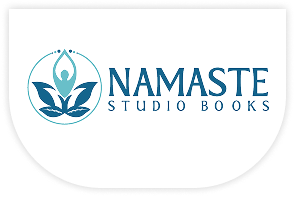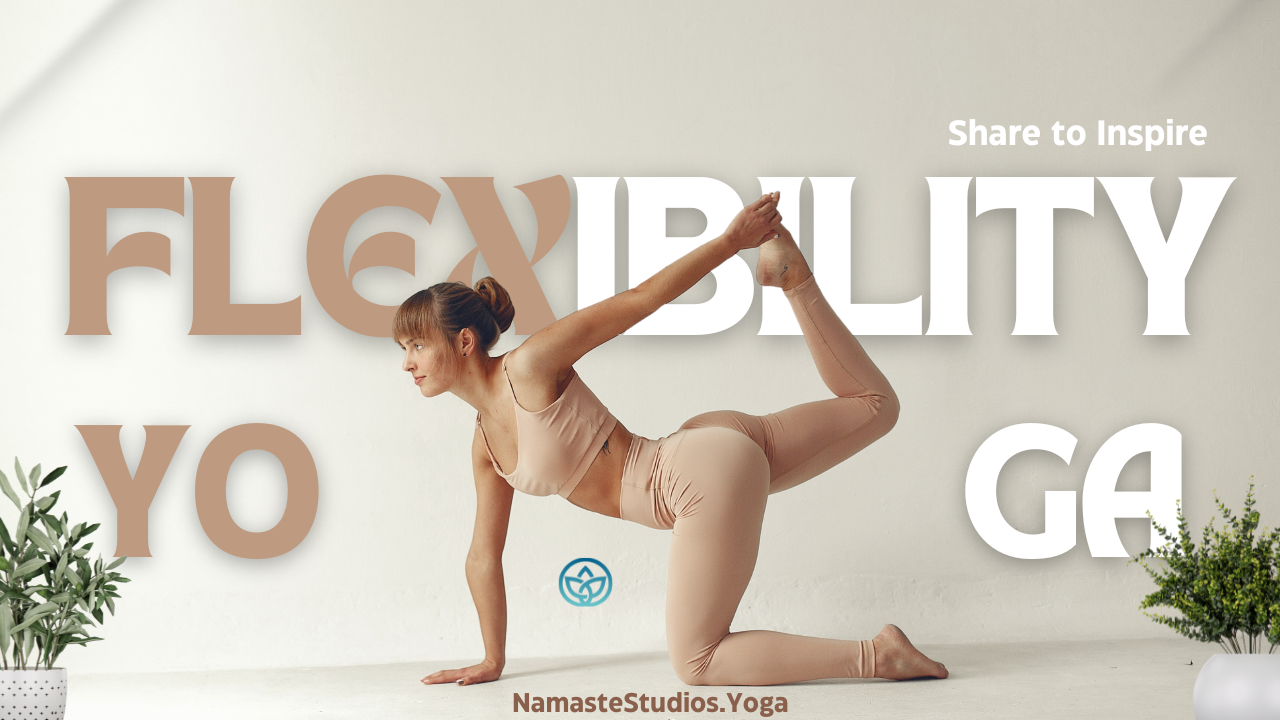By Dennis Bluthardt, Namaste Studios
Flexibility plays a vital role in the tasks and activities we perform daily and weekly. Flexibility can help enhance posture, reduce the risk of an acute or overuse injury, and alleviate muscle tension (i.e., “tight” hamstrings or overly developed quadriceps), among many other things in the body. As we age, flexibility becomes increasingly more critical. Flexibility can help maintain joint range of motion, or in other words, it can help maintain overall mobility and one’s ability to live a sustainable, quality life. Therefore, after about the late teens and 20s, everyone needs to make flexibility a part of their training and overall routines to experience an enhancement of their physical and mental health.
Yoga is a well-known method to increase overall flexibility and mobility. The poses, also known as “asanas,” stretch muscles and improve joint flexibility. This stretching is balanced because yoga poses often require strength, flexibility, balance, and a sense of body. A “holistic” practice that requires multiple skills increases overall body awareness. Hence, this kind of bodywork increases physical flexibility and enhances mental acuity.
Yoga can provide a workout, but it can also constitute a recovery, depending on the type of yoga and one’s physical needs. If, for example, one is already physically fit, and exercise is a regular, structured part of someone’s week, a more restorative form of yoga, say something more restful, such as Iyengar, Hatha, or a restorative yoga class, can make one’s existing routine more effective and balanced. In other words, one could enhance one’s exercise regimen and the health benefits of dietary and lifestyle enhancements, manage stress, and increase health by including yoga to increase flexibility by simply integrating it into an existing routine.
Understanding Flexibility and Mobility
Regarding physical fitness, flexibility is the ability of a muscle or group of muscles to be lengthened or to move passively through a range of motion. Range of motion is often measured by how much a joint can move, either hinging or swiveling, in different directions. This component is essential for performing well during exercise, everyday life, and recreational activities. Activities that may cause an improvement in flexibility are usually stretching exercises. The general types of stretching that are performed to enhance flexibility are static and dynamic stretching.
Mobility, on the other hand, defines the degree to which a joint can actively move but also be controlled by the surrounding tissues’ ability to produce adequate tension to support that joint. This requires other fitness components, like strength and coordination of musculature, to work synergistically together to make smooth and effective movements.
Not only do these two fitness components increase the quality of health and fitness, improve anthropometrics, and increase performance, but “practicing what you preach” about these two fitness components in your everyday life may improve the quality of life, decrease the chances of injury, and may even increase longevity!
The Science Behind Yoga and Flexibility
Yoga encourages the same full-range flexibility we see in healthy joints mechanically. Stiff shoulders, hips, or any joint up and down the spinal column are easily lengthened and generally more flexible with body weight. People who practiced yoga could better deal with the symptoms of chronic muscle conditions like carpel tunnel syndrome.
Yoga has a strong “mind” element even in physical movement, so it’s not a terrible idea to at least understand neutral position versus flexion.
Essential Yoga Poses for Flexibility
Yoga is a go-to practice for improving flexibility, and you can do several specific poses that will help. One of these is Downward Dog (Adho Mukha Svanasana). This asana stretches out your hamstrings, calves, and spine while, at the same time, strengthening your arms and shoulders. To get into Downward Dog safely, place your hands and knees on the ground, tuck your toes, and pull your bum toward the sky into a downward-facing V shape. Keep your spine straight and your heels grounded (as best as possible, go incrementally, and don’t force it).
Another stretching pose that works wonders is Pigeon Pose (Eka Pada Rajakapotasana). This pose will target the hip flexors/glutes (the hip girdle) to get you a more flexible pair of hips. Start on your hands and knees (standard tabletop pose), slide your right knee forward behind your right wrist, and straighten your left leg as much as you can behind you. Make sure your hips are squared in front. You want to avoid injury here, so your right “knee” is comfortable at a comfortable angle wherever it falls. Use props like blocks/cushions under your seats if you need to (as a beginner, you likely will).
Finally, for spinal flexibility, consider practicing Cobra Pose (Bhujangasana) to help you get the kind of flexible back you’ve always wanted. This asana will open your chest and stretch your abs. Lie flat on your chest, pushing your hands down into the ground under your shoulders, and elevate your chest, keeping your elbows close to your torso. Remember to engage your back muscles and imagine that they pull your chest up, not your hands pushing from the ground. This will prevent back injury.
Add these into your practice for maximum flexibility results. Make sure you’re adequately warmed up, and don’t push so hard that you get into your pain tolerance, and you will be fine. Ideally, you would get a qualified person to guide you and help you become proficient at every pose before practicing this independently. Practice regularly.
Creating a Yoga Routine for Flexibility
A yoga sequence for flexibility might include poses like Downward Dog, Forward Fold, and Pigeon Pose. These poses help to gently stretch out different areas of the body, relieving tension and improving the overall range of motion. After practicing these poses regularly, you will likely find that tasks that require flexibility are also becoming easier to perform.
Stretching is an integral part of our practice because it helps us improve flexibility. Focusing on the breath in each pose can also help make stretching a calming practice.
How many times a week should you do yoga for flexibility? The answer might be two to three times. The so-called “rule” says this would give you enough time to maintain and gradually improve your flexibility.
Additional Benefits of Yoga Beyond Flexibility
Yoga is known for helping us reduce stress and clear our minds. It’s the one practice that, while promoting relaxation through regulated breathing, also allows us a brief period of “escapism” in a very unnatural, erratic world. We meditate, perform physical poses, and follow guided breathing exercises, all of which help to turn on the body’s parasympathetic nervous system (our “rest and digest” system). This system helps decrease our cortisol (the stress hormone) levels. While stress is known to trigger cortisol spikes, yoga has been used to counterbalance the body’s stress-cortisol response. So, over time and with more regularity, we will be less likely to respond (as intensely) to many of today’s daily stressors. Instead, we’ll learn to focus better and compartmentalize our stressors, putting us all in a better mental state.
The best reason why yoga is considered just as much an exercise as lifting weights, running, or playing sports is the fact that yoga increases an individual’s flexibility, improving range of motion. With an assumed “healthy” state of physical, muscular-skeletal flexibility, a person is better prepared (and less likely to be injured) in other exercises, like running, strength training, or playing team sports. Yoga fosters the concept of being able to achieve a good range of motion in all our joints, as well as complete “stretchability” in our muscles. When we can play sports and move under load with fluidity (instead of fighting to propel our bodies/metabolically overcome the demands of any physical activity), we ultimately become more efficient in our performances and the times required to recover from training.
Yoga can completely change your body in terms of flexibility and mobility. As we age or live sedentary lives, we lose flexibility, and muscles contract, leading to a shortened range of motion and mobility. Yoga helps lengthen and stretch your muscles and joints to increase flexibility, mobility, and functionality, leading to a healthier body. Most workouts will push your body based on strength training and volume, which can eventually lead to an increased risk of injury. Yoga has a low impact and is very beneficial for increasing blood flow, making recovery more critical in the future, creating far less risk for injury in the short and long term.
There’s no better time than now to start yoga. Mainly because there are so many different types of classes that you can sign up for at the beginner level and at the most advanced level; there are just so many practices and yogis that you can follow. If that’s in person when fitness clubs open again, or if that’s online, there’s always someone running a class, someone with a style that might suit your style. It’s essential to remember that flexibility is a journey, not a destination. Not everyone is going to be flexible right at the beginning. This goes for anything. You won’t be great at everything you pursue in life the first time.

